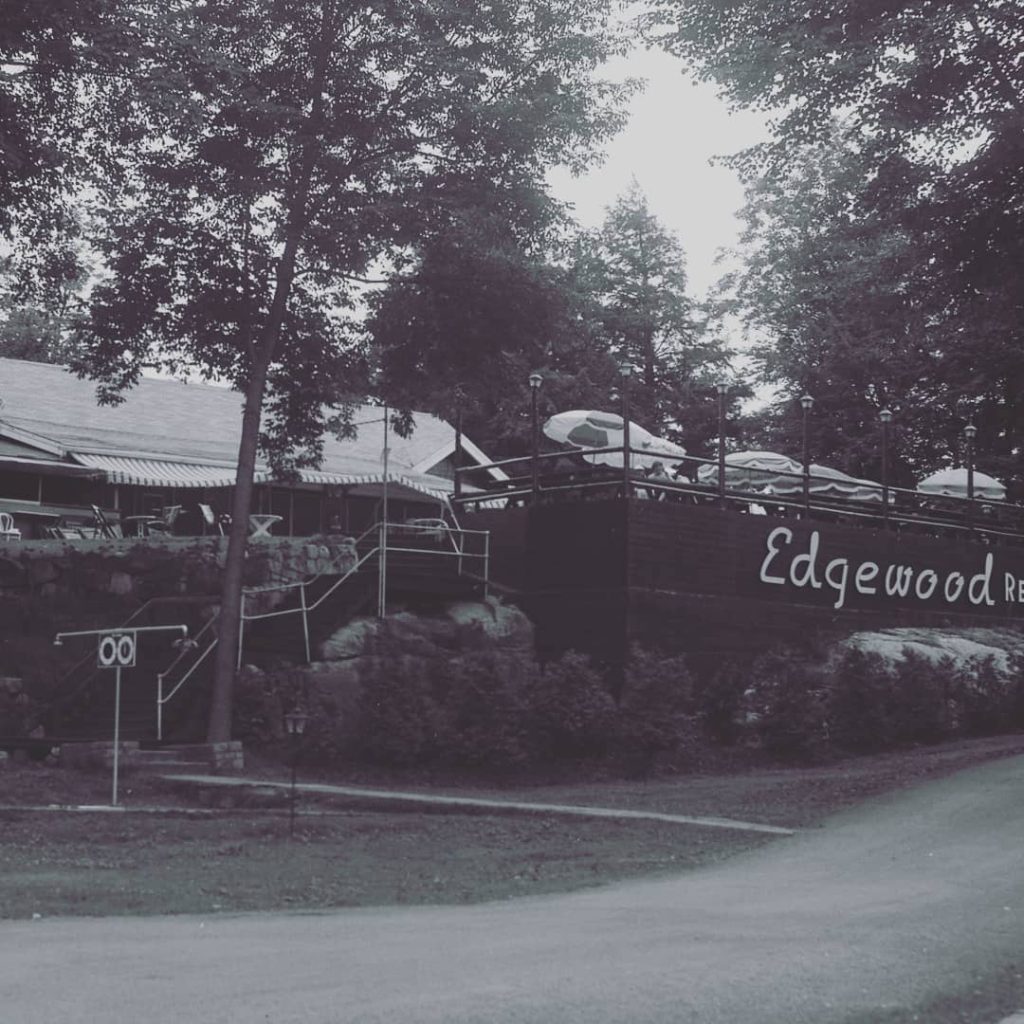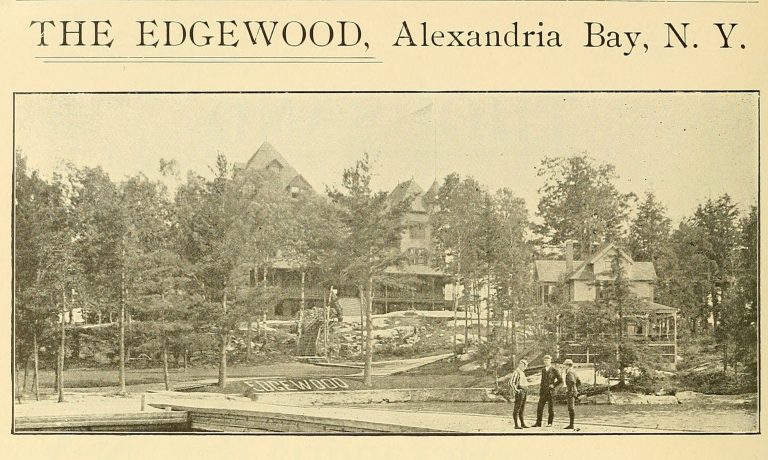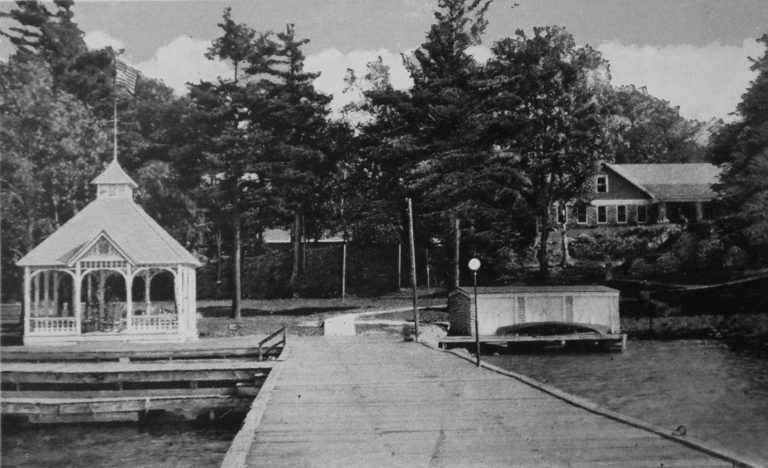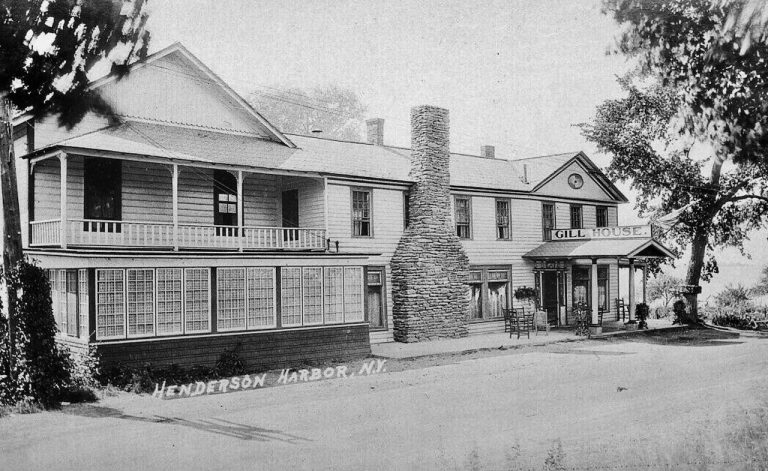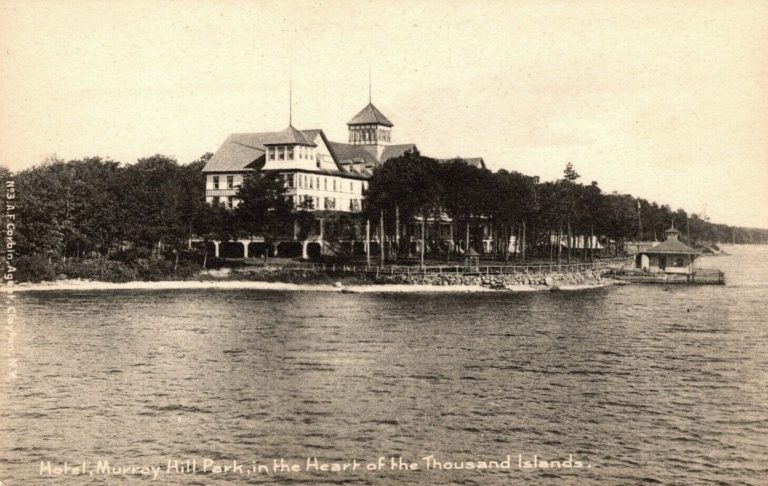Edgewood Club of Cleveland, Ohio, Build the $12,000 Club House “Edgewood Park Hotel” Near Alexandria Bay In 1886
Edgewood Park, located adjacent to Alexandria Bay and nearby Cherry Island, began in 1886 with the construction of the Edgewood Park Hotel. Using the business model established for Thousand Island Park, Central Park (later renamed St. Lawrence Park), and Westminster Park, the Edgewood Club of Cleveland Ohio followed on the heels of those successful developments to establish a private club with hopes of building a cottage around it.

Edgewood Park was owned by an association that included a number of influential Ohioans including ex-President Rutherford B. Hayes, Senator and future Secretary of State John Sherman, ex-Mayor William G. Rose of Rose Island, and Illinois Senator John A. Logan who passed away in December of 1886 before the Edgewood Park Hotel’s grand opening the following spring.
Construction of the Edgewood Park Hotel began in the spring of 1886. The $12,000 clubhouse was contacted to J. B. Flynn & Co. and was designed by architect I. D. Flynn. The Watertown Daily Times article published on July 8, 1886, provided a number of details with regards to the Park and its operation–
This is the biggest building season in and about Alexandria Bay since 1881. Eleven new cottages are going up. The Marsden house has just been completed, and there is a large force at work on the Edgewood Family hotel at Edgewood Park.
This hotel is being put up by the Edgewood club, of Cleveland, Ohio. The club has issued stock to the amount of $50,000, in 500 shares of $100 each. The distribution of these shares is being carried on in the principal cities and towns of the country for the purpose of bringing together the congenial people from various parts of the continent. It is designated that the families of members shall have all the advantages that $50,000 can bring, and at the same time be provided for at a comparatively moderate cost.
Edgewood Park is a romantic mainland point, reaching out into the bay and commanding a magnificent view of the St. Lawrence and some of the most costly villas on the islands. The hotel is to run a combination of the American and European plans. It is the intention to sell or lease lots to such members as desire to build summer residences; but no cooking will be allowed in the cottages which may be erected.
All this work must be done at the hotel. However, meals will be served in the cottages, or cottagers may go to the hotel, as they choose. This arrangement is made to avoid all disagreeable odors which might arise from the numerous low chimneys of the cottages. The hotel chimney is built specially high to carry off all unpleasantness from the cooking.

By the end of July, the Edgewood Park Hotel was rapidly nearing completion. Once opened, the three-story structure could accommodate a hundred or more guests. Its opening in May of 1887 was under the management of H. H. Burgess, of Cleveland, Ohio, who was also secretary of the association. The Times noted in an article in July of 1887 that the park was formerly referred to as Cleveland Park after G. C. Martin’s cottage described as “a handsome little cottage a few rods distant.”
The article went on to describe the Edgewood Park Hotel in great detail, including, in part–
The interior of the building is arranged to perfection for entertaining one large and happy family, which the guests there will virtually be. On the main floor is the parlor, office and dining room, carpeted with rugs on a hard-wood floor and polished.
Three rooms can be thrown into one on state occasions. They are fitted up with elegant chandeliers and everything to correspond, with cherry, oak and walnut furniture through all the rooms. The second and third floors are filled with sleeping rooms, and their arrangement is superb, wholly for the comfort of their guests.
The hotel went so far as to have every piece of earthenware and silverware inscribed with “Edgewood,” and every room on the lower floor was graced with an old-fashioned mantel over a brick fireplace. The barbershop, billiard room and kitchen were located in the basement.

The Edgewood Park and Hotel proved to be one of the popular places for entertainment and social gatherings on the St. Lawrence River. An affair in August of 1888 saw the house and grounds “tastefully illuminated and decorated” for the arrival of the elite of the river. G. C. Martin had extended the hospitalities of the hotel one evening each week to the cottage people.
On that particular night, in attendance were no less than ex-Mayor Rose and family, A. B. Pullman, Judge and Mrs. Isabella Spencer of Manhattan Island, George Pullman and family from Pullman’s Castle Rest, which had just been given as a gift to his mother, Emily Caroline Minton Pullman, four days earlier on her birthday, Henry Heath of Nobby Island, The Deweys of Dewey Island, the Oliphants of Neh-Mahbin, among many others.

Almost exactly a year later, then-Congressman Roswell P. Flower, “Watertown’s favorite Flower and benefactor,” and the next democratic Governor of New York, sojourned at Edgewood Park along with his wife Sarah, daughter Emma, and Postmaster John C. Streeter and Isaac P. Powers and his unnamed daughter.
In 1890, an annex to the hotel was erected, but disconnected from the hotel, but nearby. It contained a bowling alley, shooting gallery, billiard room, barbershop, rooms for guests and quarters for the hired help. The front will be two stories high and the architecture the same style as the hotel. The annex added twelve sleeping rooms to the capacity of the house beside the space in the hotel now occupied by the barber shop, etc., while construction costs were estimated at between $3,500 – $4,000.
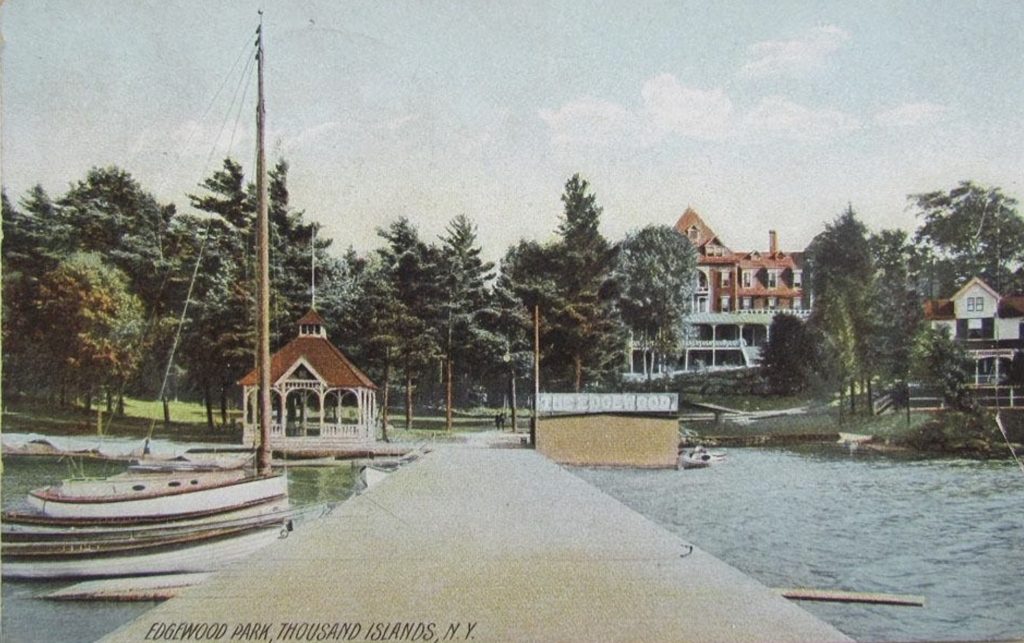
Fire Destroys Original Hotel In September 1917
In 1916, $12,000 was spent improving the Edgewood Park Hotel with interior decorations, only to see it all go up in flames the following year on September 15. The loss was estimated at $75,000, but wasn’t known fully at the time until insurance adjusters and hotel owner I. Lamson Jennings of Cleveland, Ohio, had the opportunity to survey the property.
The fire was contained to only the hotel and the cottages surrounding it were spared after the Alexandria Bay Fire Department focused its efforts on keeping the flames from spreading after it was determined the hotel fire was beyond their control. The insurance on the hotel amounted to only $18,000 while it was valued at $75,000. The furniture within was covered for $4,000.

Less than a month later, the Watertown Daily Times reported on October 12, 1917, that plans were underway to rebuild the hotel at Edgewood Park to the tune of $125,000. D. A. Blamer, from Cleveland, Ohio, was tasked with completing plans for the new hotel. Upon completion, a luncheon was held in Cleveland with various people interested in the proposition and the money could be raised by subscriptions. At that point, prior to even having plans, $32,000 had already been raised.
The Edgewood Park Hotel was subsequently built with 105 sleeping rooms, 5o baths, an elevator, running water in all rooms, private dining rooms, and the main dining room capable of seating 225. The existing accommodations at the time consisted of the terrace’s 30 sleeping rooms. As its close proximity had implications for Alexandria Bay, the businessmen of the community agreed to financially assist the plan.

Just three years later, Jennings sold Edgewood Park, minus his own cottage, to its former proprietor, Bert W. Freeman. Freeman’s intention was to make the park a summer bungalow colony with several to be constructed in addition to improvements such as doubling the dining room’s capacity. The resort at this point had its own horse track and private golf course, but Freeman sold it in 1921 to W. W. Bailey.
Several years later, the property fell behind in taxes and was sold in 1928. Initially, the bid was to include all of the parcels of property, 105 in total, but nearly half of their owners were able to redeem the property before the final tax sale to Bert W. Freeman, once again.

Edgewood Park remained a popular destination over the years, adding to its attractions such as the Edgewood Raceway in 1950 for several years and Adventure Town in 1955 which ran through the 1961 season. Ownership changed in the ensuing years with construction projects and improvements taking place, particularly in the 1980s under owner Jeffrey Hebert, who expanded the dining room by 150 additional seats while also expanding the nightclub “Scuttlebutt Saloon” to a capacity of 400.
Most recently, the Edgewood Resort has been owned by Benjamin & Janine Ridley who acquired the property in 2002 after it went through a number of years of financial difficulties in the 1990s. The family from Syracuse had been coming to a summer home on Iroquois Island for nearly four decades and plans to complete the work on a 500-seat convention center that began in 1998 but was put on hold. The couple later purchased Pine Tree Point Resort in 2015 and have been renovating the property there as well.
